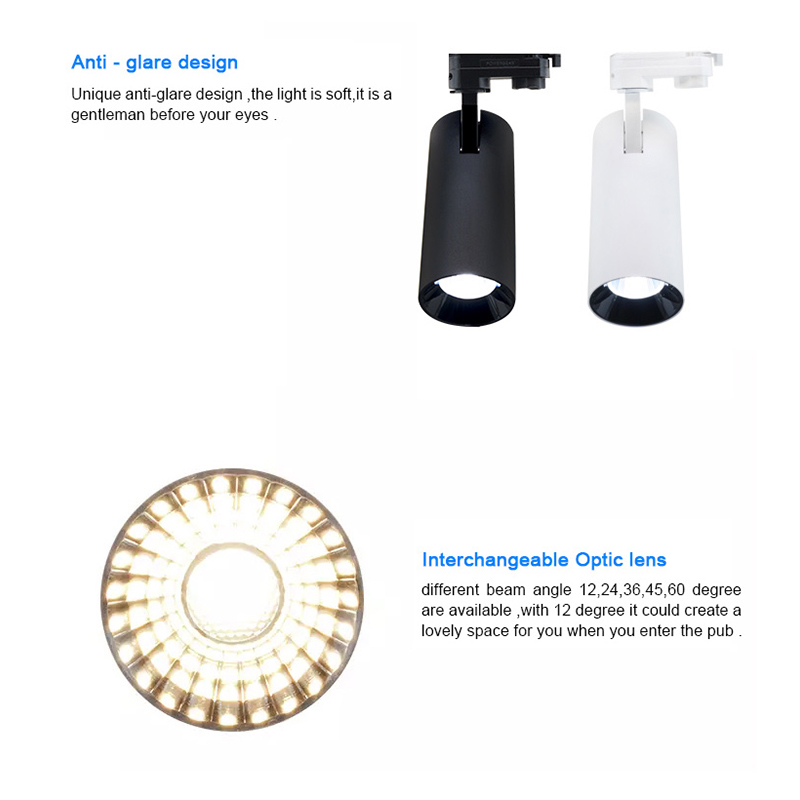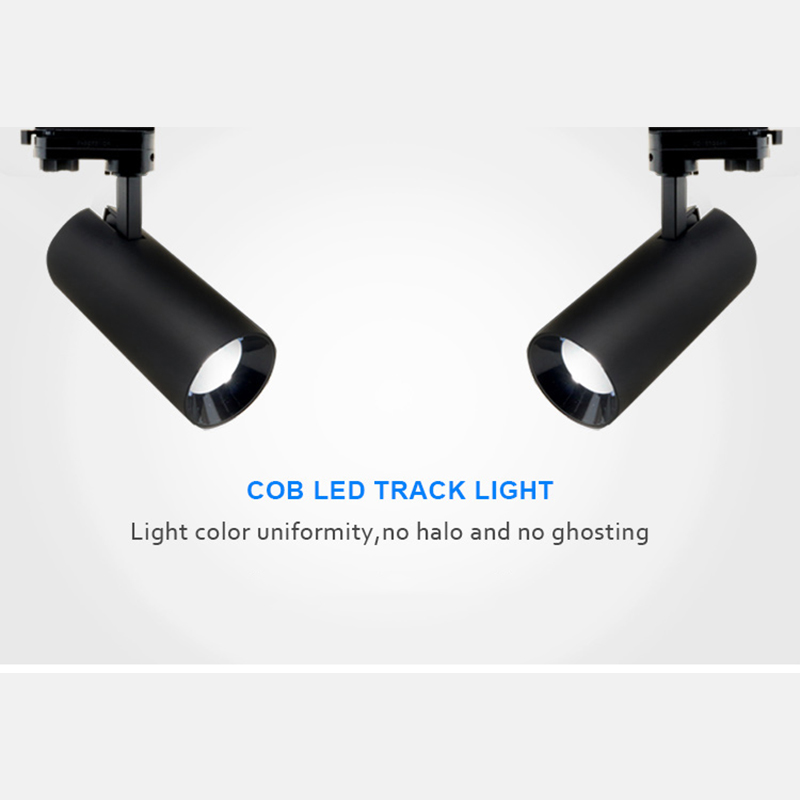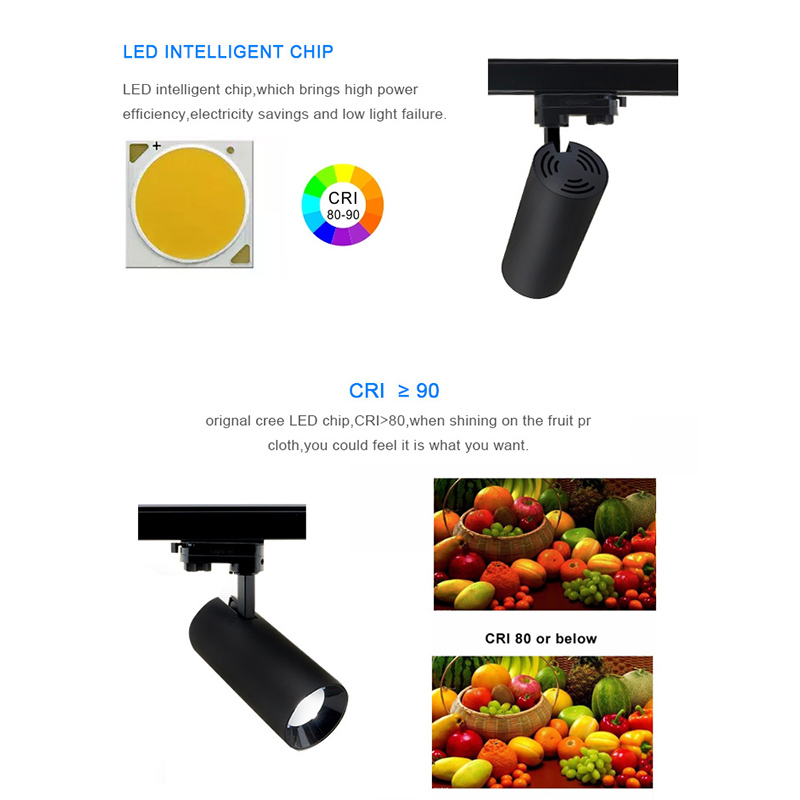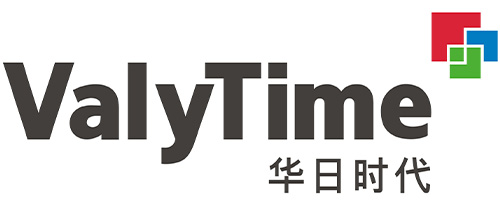What is LED track light?
Among many lighting products, LED track lights are becoming a popular choice for commercial, residential, and exhibition lighting due to their unique design and flexibility. Unlike traditional ceiling or wall lamps, LED track lights provide more concentrated illumination and are highly adjustable, making them widely used in many professional environments.
This article will provide a comprehensive analysis of LED track lights, exploring their basic concepts, operating principles, key features, applications, advantages and disadvantages, and other aspects to help readers gain a comprehensive understanding of this modern lighting device.

What are LED track lights?
LED track lights are track-mounted lighting fixtures based on LED light sources. Their key feature is that the lamp body is mounted on a track system and can slide or rotate freely on the track to adjust the direction and range of illumination. Unlike traditional fixed lighting fixtures, LED track lights can be flexibly adjusted in position and angle according to actual needs, providing more precise and controllable lighting effects.
LED track lights typically consist of the following components:
· Track system: This is the core component of an LED track light, typically made of metal or other durable materials, and serves as the support for the luminaire. The track system contains the electrical connections that power the luminaire. Tracks can be straight or curved, allowing users to flexibly configure them to suit the layout of the space.
· Lamp units: Lamp units are the light source of an LED track light and typically include the LED lamp head, reflector, and lampshade. Different lamp units can be connected by sliding, rotating, or sliding connections, extending the overall lighting coverage. The lamp heads of LED track lights are typically compact and provide efficient light output.
· Electrical system: The electrical system of an LED track light is critical to ensuring the proper operation of the luminaire. The electrical system delivers current to each luminaire unit through the track, typically ensuring a certain level of current stability and safety.

How does an LED track light work?
The operating principle of LED track lights is similar to that of traditional LED lamps, both utilizing the photoelectric effect generated by LED chips to provide illumination. The core advantage of LED track lights lies in their mounting configuration and flexibility, allowing for the adjustment of the beam direction and angle as needed.
The operating principle of LED track lights can be broken down into the following steps:
· Power supply: Track lights transmit electrical current to the luminaire units through electrical connections within the track. Each luminaire unit contains an LED chip, which generates light when excited by the current.
· LED chip luminescence: The semiconductor material within the LED chip generates photoelectrons when acted upon by an electric current, and these photoelectrons release light energy through the transfer of charge. LED lamps typically use white light LED chips, but some also offer specific color temperatures or colors (such as warm white, cool white, and RGB).
· Beam control: Unlike traditional fixed lighting fixtures, the luminaire units of LED track lights can be freely moved or rotated on the track. Users can adjust the angle of each luminaire to change the direction of illumination as needed. Some LED track lights also feature focusing and diffusing features, allowing for precise control of the size and distribution of the beam.
· Heat dissipation: Because LED lamps generate a certain amount of heat during operation, LED track lights are typically equipped with a heat sink or heat sink to effectively reduce the temperature and extend the lamp life.

What are the characteristics of LED track lights?
1. Adjustability
The most significant feature of LED track lights is their exceptional adjustability. Each luminaire unit can slide or rotate freely on the track, allowing users to adjust the direction and angle of the light source to meet their lighting needs. This makes LED track lights particularly suitable for venues requiring precise lighting, such as exhibition halls, art galleries, shopping malls, and retail stores. In these venues, flexible light adjustment effectively highlights key areas and meets diverse lighting requirements.
2. Energy Efficiency
LED track lights offer significant energy-saving advantages over traditional halogen and incandescent lamps. LED chips convert most electrical energy into light rather than heat, significantly reducing energy waste. By using highly efficient LED chips, LED track lights are more energy-efficient and have a longer lifespan than traditional light sources while providing the same brightness.
3. Modern and Aesthetic Design
LED track lights typically feature a modern, minimalist design that blends seamlessly into a variety of decor styles. The luminaire units are typically compact and seamlessly integrate with the track system, creating a clean, modern look. This design not only fits in with the current trend for minimalist style but also effectively saves space, making it popular in many commercial and domestic environments.
4. Directional Lighting
LED track lights provide directional lighting, making them particularly suitable for accent lighting. For example, LED track lights can focus light on specific areas, such as display shelves, exhibits, bookshelves, artwork, or retail merchandise, highlighting details or colors. This feature has made them widely used in commercial displays and art exhibitions.
5. Easy Installation and Expansion
LED track lights are relatively easy to install. Typically, the track system is fixed to the ceiling or wall, and then the lighting units are mounted on the track. Because the track system is expandable as needed, more lighting units can be added as needed, or the length and shape of the track can be flexibly adjusted to suit the spatial layout.
6. Highly Dimmable
Many LED track lights are designed with dimming functions, allowing users to adjust the brightness and color temperature of the light according to actual needs. Using a dimmer or smart control system, users can easily adjust the light intensity to ensure optimal lighting at all times. This feature enables LED track lights to provide highly adaptable lighting solutions for diverse industries and lighting applications.
What are the applications of LED track lights?
1. Retail and shopping mall lighting
LED track lights are widely used in retail and shopping malls. Places like shopping malls, exhibitions, and specialty stores often require precise illumination of specific items, shelves, or display counters to attract customers' attention. LED track lights provide directional illumination, highlighting the color, shape, and details of displayed items, thereby enhancing their visibility and appeal. Furthermore, shopping malls often require flexible adjustment of light intensity and direction, a requirement perfectly met by the adjustability of LED track lights.
2. Art gallery and museum lighting
Cultural venues such as art galleries and museums also widely use LED track lights for exhibit lighting. LED track lights can be flexibly adjusted to suit the placement and display requirements of the exhibits, avoiding direct glare or shadows, ensuring uniform, soft illumination of the exhibits. Furthermore, the high color rendering index (CRI) of LED track lights effectively displays the true colors of items and avoids color shift.
3. Home and Indoor Lighting
LED track lights are becoming increasingly common in home lighting. Their modern, minimalist appearance makes them a popular choice for modern homes. Whether in the kitchen, living room, or bedroom, LED track lights provide a comfortable lighting experience. Especially in areas requiring accent lighting, such as study rooms, galleries, and dining tables, LED track lights can flexibly adjust the light direction to provide appropriate lighting for different activities.
4. Office and Workspace Lighting
LED track lights are also widely used in office environments. Their flexible light source adjustability allows them to adapt to different work needs, such as highlighting workstations, conference tables, or display screens. This adjustability makes them an ideal choice for workspaces that require flexible layouts.
5. Outdoor and Landscape Lighting
Some high-end LED track lights can also be used for outdoor lighting. In landscape design, LED track lights can provide directional, aesthetically pleasing lighting for areas such as gardens, courtyards, and building facades. By strategically placing track lights, unique visual effects can be created, enhancing the overall landscape ambiance.

What are the advantages and disadvantages of LED track lights?
Advantages of LED track lights:
1. Flexible adjustment of lighting direction and angle to suit different lighting needs.
2. Energy-saving and environmentally friendly, more efficient than traditional light sources, reducing energy consumption.
3. Long lifespan: LED technology significantly extends the lifespan of the lamp, reducing the cost of frequent bulb replacements.
4. Modern design and a simple, elegant appearance make them suitable for a variety of home and commercial environments.
5. High scalability: users can freely add lighting units as needed.
Disadvantages of LED track lights:
1. Higher cost: Compared to traditional lighting, LED track lights have a higher initial investment.
2. Complex installation requirements: Requires a track system and may require professional installation.
3. Limited illumination range: Although they provide a concentrated lighting effect, they are not suitable for lighting large areas.
Do you offer LED lighting for kitchen and cabinet applications?
Yes, Huari Lighting manufactures LED cabinet lights and strip lighting solutions designed for kitchen and furniture applications. These lights are compact, easy to install, and energy-efficient, making them ideal for modern interiors. Our factory supports bulk supply with customization for length, color temperature, and connectors.
Many of our overseas clients buy these products in large quantities for furniture manufacturing or home improvement retail. Get in touch for the latest product catalog and price list.
